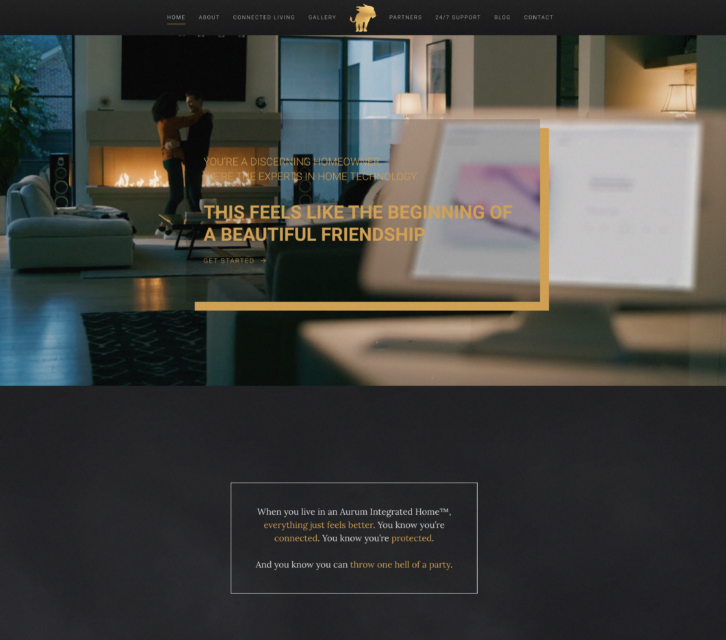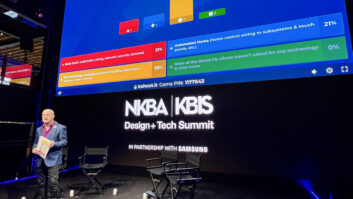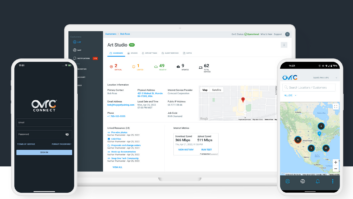Brands age. It’s a simple fact. Only sometimes they don’t age like a fine wine that gets better over time. All too often, brands get stuck in the era in which they were created. They bullishly hold onto outdated logos that have no equity, taglines that no longer serve them, and messaging that rivals Ambien in its soporific qualities. Without realizing it, company names and the way they present to consumers gets outdated. Sadly, this happens quite a bit in our industry, especially among residential technology integration firms.
For one, I feel strongly that we, as an industry, need to focus on reaching a much larger audience. To do this, the brilliance of everything our industry does must be more easily recognizable to mainstream consumers. To accomplish this, we need to look inward and consider the overall presentation. This starts with the names of companies, but is equally important for taglines, descriptors, and imagery. To attract more consumers and the adjacent trades we must get away from relying heavily on acronyms like AV and the use of terms that are really only meaningful to those in our trade. “AV” is our commonly used acronym, but to others it could mean anti-virus, aviation, or aperture value. “Controls” can be HVAC. “Systems” can be computers. “Electronics” can mean anything from a toothbrush to a toaster. The use of these kinds of words can confuse, intimidate, and ultimately turn off potential customers.
More Secrets of Success: Top Ten Marketing Mishaps to Avoid
So how do you keep your brand relevant? Before I give you some tips on that, it’s important to define what a brand is and isn’t. A brand is not a logo. It’s not products. It’s not your tagline. And it’s not your Pantone colors. I particularly like how brand strategist Steven Picanza defined a brand in a recent newsletter. He says, “Branding is the Swiss-army knife of an organization. Multiple uses and an item you never want to leave home without…ultimately, it isn’t what you say it is. It’s what they say it is.”
In other words, your brand is the impression you leave with those who engage with it. This can take the form of tangibles like artwork, content, logos, colors, and the like, but it can also be influenced by your reputation and how you are known for things like customer service and core values. You can’t force someone to buy the brand you craft for them.
To be clear, there is no magic bullet to brush-up your brand. You can’t just redesign a logo or rename your company and expect a change in the way the market perceives you. Logos stand on your business’ core values. Without those, they are completely hollow and meaningless. The effort has to be more grassroots than that.
My team and I have helped many companies tackle rebranding efforts. Companies usually want to start by rewriting the company’s core mission statement. We guide them to go deeper than that, and it morphs into an exercise of what the client or customer needs and wants and how the brand can best serve those needs. For example, you can craft the words you think your customers want to hear, or you can be armed with that information to inform your rebranding effort. The latter makes a lot more sense, doesn’t it?
So, when you are thinking about refreshing your brand, which you should absolutely do periodically, here are some things to take into consideration. Remember, this is not the be-all and end-all of rebranding pointers, just some ideas to get you percolating on the subject.
- Talk to your customers. Have you asked your customers how they think about you? You should! It can start with a “how did you hear about us?” but it should go far beyond that to determine their overall impression of your business in the market. Get on the phone. Do a survey. Ask them in person when you’re on a job site. More than likely, you’ll be surprised by some of the results and can adjust your marketing and fundamental purpose accordingly.
- Be a brand to believe in. I’ve said it before, and I’ll say it again: People are looking to do business with companies that have core values that align with their own. For an integrator, this might be something like supporting local schools. For a manufacturer, it could be having green initiatives or giving back to the global community.
- Be transparent. It’s always important to be completely transparent with customers. Consumers are savvier than ever, and they don’t tolerate an ounce of BS. If you make a mistake, own up to it. If you have policies that you think your customers need to know about, post them on your website.
- Be relatable. Don’t get too cute with your words. You need to tell your customers who you are, what you do, and how you’re different within seconds of their first interaction with your brand. Otherwise, you will lose them. Period. Taglines and descriptors need to be succinct, using language that’s familiar to the outside world. Your brand’s voice is where you can be a little more unique, even clever, but there’s a fine line between funny and offensive.
- Be intentional. Stay away from acronyms, jargon, and industry-speak. Instead, use common phrasing that aligns with search terms and phrases people are likely to use and get to the point, fast. One of my all-time favorite examples of this is Aurum (https://www.aurumhometech.com/), whose homepage opening statement says, “You’re a discerning homeowner. We’re the experts in home technology. This feels like the beginning of a beautiful relationship.” Boom. Nailed it.

It’s not easy to change the language of your company or brand, but consider what might happen if you do. Using more common language makes your brand, your firm, and your people more approachable and, therefore, more likely to get the inquiry, the bid, and the sale.
Aurum absolutely nails it with this statement, in my opinion: “When you live in an Aurum Integrated Home, everything just feels better. You know you’re connected. You know you’re protected. And you know you can throw one hell of a party.”
More Secrets of Success: On the Value of Human Interaction
I don’t have a working relationship with this firm, but I can tell you, from the moment I read this and went through their site, I fell in love with what they do and have never forgotten them. Isn’t that what you want from every visitor to your site and with every interaction people have with your brand?
Need a little help wrapping your head around a rebrand or refresh? Drop me a line at [email protected] — KMB is here to help!







